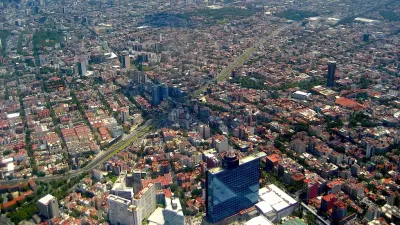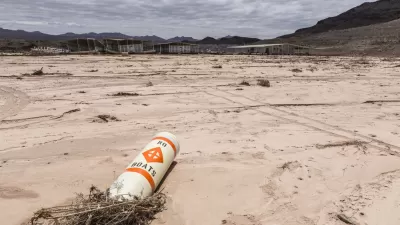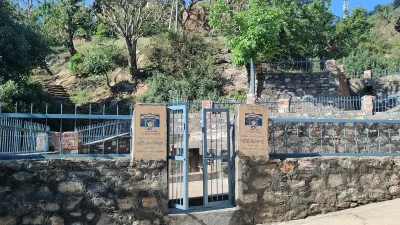As Mexico City continues to add population, issues of sprawl, inequality, and water infrastructure remain challenges in the growing megalopolis.

With its population expected to hit 24.33 million people by 2050, Mexico City residents, planners, and officials are facing increasing challenges to livability. Reporting in Inverse, Neel V. Patel writes that the three biggest challenges facing the city are inequality, poor water management and "questionable transportation."
The growing concentration of wealth in the city's center has led to gentrification which has pushed out poorer residents to Mexico City's periphery, adding to the issues of sprawl. Patel writes: "Sprawl also exacerbates problems of mobility. Mexico City residents — 78 percent of which don’t have a car — spend an average of two to three hours commuting to and from work. There's a dire need for more public transportation that is not being met." Addressing sprawl and transportation issues will remain a challenge due to lack of coordination between various local and federal agencies.
Lastly, the city's drainage system is antiquated and unable to manage heavy rainfalls, resulting in flooding and mudslides. The poor water management system has also led residents to get their supply of water from water trucks, rather than relying on local infrastructure.
Water management is an especially paradoxical problem. “The irony,” says [Diane Davis, an urban planning professor at Harvard], “is that Mexico City” — built on a lakebed — “has an excess of water, but it’s not well managed or captured. There’s a lot of rainfall that produces a lot of flooding. At the same time, the drainage infrastructure is such that it can’t separate sewage from drain water.”
FULL STORY: The Future of Mexico City: A Design Town With an Infrastructure Problem

Alabama: Trump Terminates Settlements for Black Communities Harmed By Raw Sewage
Trump deemed the landmark civil rights agreement “illegal DEI and environmental justice policy.”

Planetizen Federal Action Tracker
A weekly monitor of how Trump’s orders and actions are impacting planners and planning in America.

The 120 Year Old Tiny Home Villages That Sheltered San Francisco’s Earthquake Refugees
More than a century ago, San Francisco mobilized to house thousands of residents displaced by the 1906 earthquake. Could their strategy offer a model for the present?

Ken Jennings Launches Transit Web Series
The Jeopardy champ wants you to ride public transit.

BLM To Rescind Public Lands Rule
The change will downgrade conservation, once again putting federal land at risk for mining and other extractive uses.

Indy Neighborhood Group Builds Temporary Multi-Use Path
Community members, aided in part by funding from the city, repurposed a vehicle lane to create a protected bike and pedestrian path for the summer season.
Urban Design for Planners 1: Software Tools
This six-course series explores essential urban design concepts using open source software and equips planners with the tools they need to participate fully in the urban design process.
Planning for Universal Design
Learn the tools for implementing Universal Design in planning regulations.
Clanton & Associates, Inc.
Jessamine County Fiscal Court
Institute for Housing and Urban Development Studies (IHS)
City of Grandview
Harvard GSD Executive Education
Toledo-Lucas County Plan Commissions
Salt Lake City
NYU Wagner Graduate School of Public Service




























